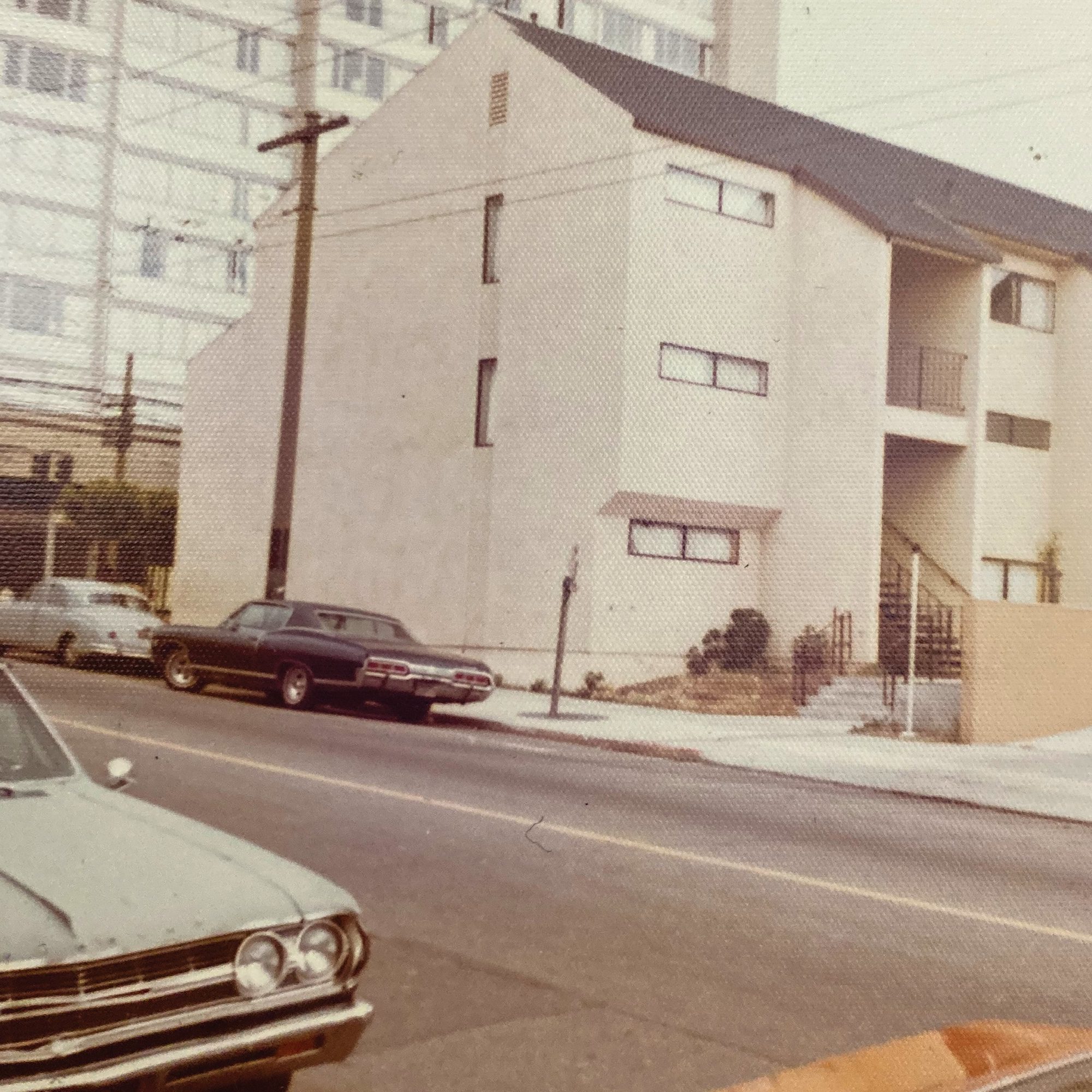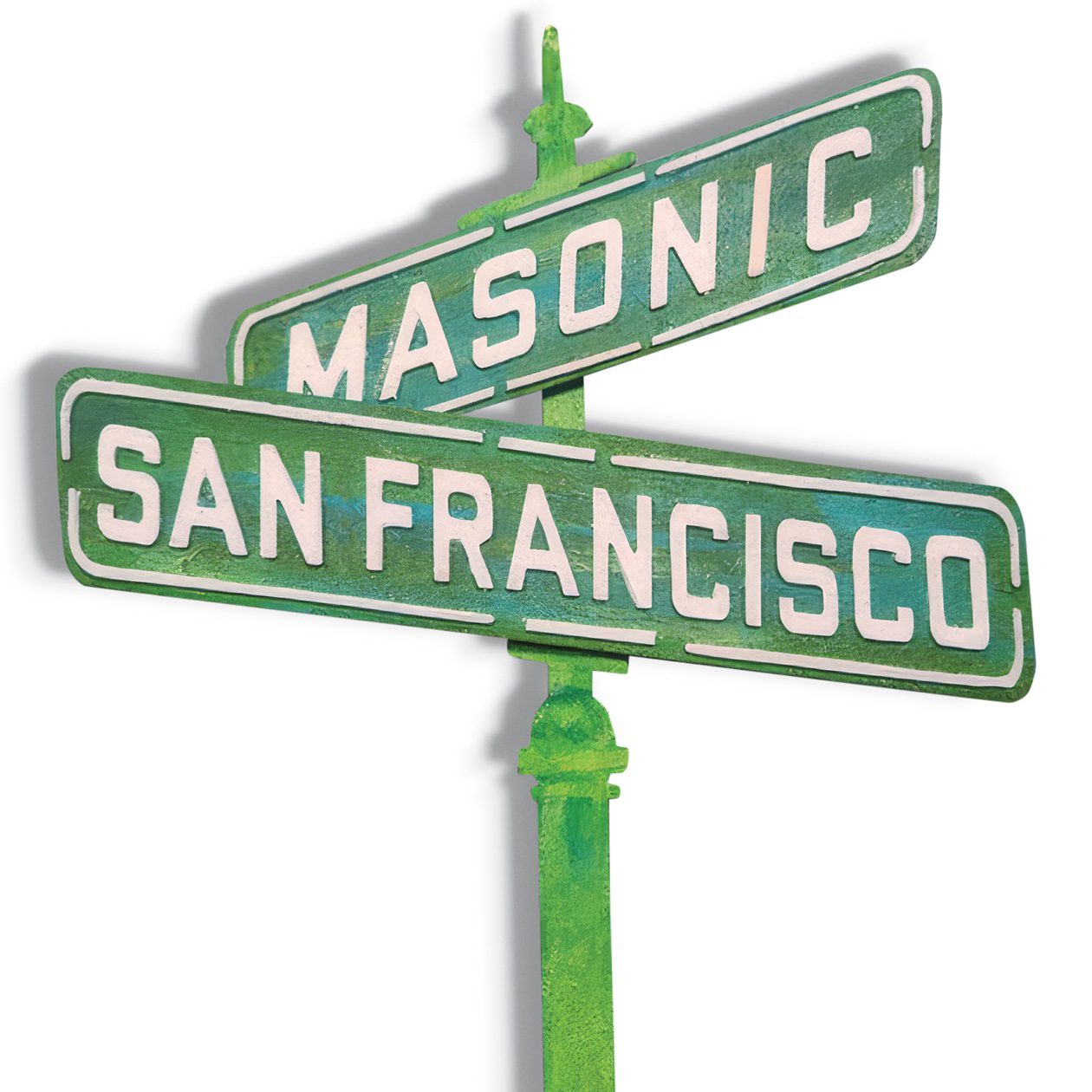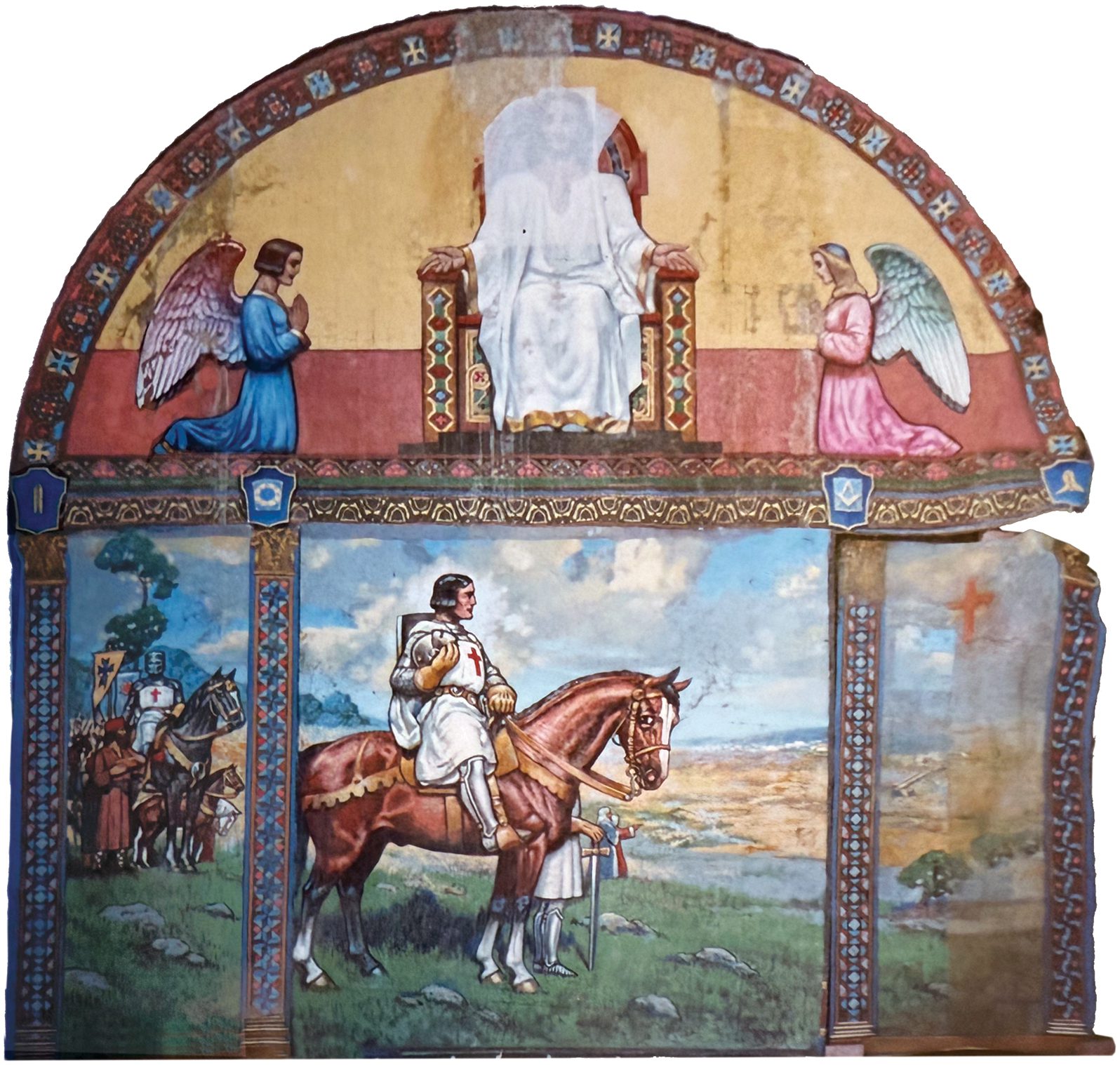
At the Prince Hall Apartments, a Complicated Legacy
The Prince Hall Apartments, built by the fraternal order during San Francisco’s urban renewal, are a testament to the city’s black history.

By Ian A. Stewart
Above: The “Crusader” mural by Arthur Mathews, a 22-by- 20-foot painting that once hung over the Commandery Hall of the San Francisco Grand Lodge temple at 25 Van Ness. Arthur and Lucia Mathews were influential early 20th century artists in San Francisco.
It was more than 40 years ago that Thomas Portue first gazed up at the massive painting of a crusading knight on horseback inside San Francisco’s old Grand Lodge temple. The colors were a little off, but in its style, tone, and theme, Portue—an art restorer by trade—instantly recognized the hand of Arthur F. Mathews, one of California’s most important artists.
In fact, Mathews’ fingerprints were all over the former temple at 25 Van Ness, which housed the Grand Lodge of California from 1913 to 1958. Together with his wife, Lucia Kleinhans Mathews, with whom he ran an influential studio, Mathews in 1913 won the commission to design and execute almost all of the interior decor for the 20,000-square-foot building, including paintings, carpeting, furniture, moldings, and more. That made the site one of the most important examples of the work of Arthur and Lucia Mathews, artists who “were a guiding and refining influence on the exuberant development of San Francisco’s cultural identity,” as the Oakland Museum of California curator Harvey Jones once wrote.
And yet now, practically all traces of that commission are gone, scattered to the winds or plastered over.
Today the crusader mural—an arched 20-by-22-foot canvas, one of six large paintings Arthur Mathews created for the temple’s Commandery Hall—is in storage, part of Portue’s private collection. Additional Mathews pieces from the temple are in other private collectors’ hands. Still more are unaccounted for entirely. The reasons for this are numerous, beginning with the 1970s sale of the temple, during which many of the furnishings were sold off at auction. In other cases, pieces were destroyed, misplaced, or otherwise lost track of. Others were literally painted or plastered over. (Portue says he obtained the mural from the developer hired in the 1980s to convert the temple into office space.) For years, the 25 Van Ness collection seems to have flown under the radar. But with the recent surge of interest in California Arts and Crafts style, the Masonic temple project stands as something like a lost testament to
what might have been.

Along with figures like Bernard Maybeck, Julia Morgan, and William Keith, Charles and Lucia Mathews were among the leading figures of the California Decorative Arts style. In form and function, their work blended the arts of painting, architecture, and furniture making, each emphasizing the beauty of nature. It also married the American Renaissance style of the time, with its allusions to ancient Greece and Rome, with the Arts and Crafts mien first made popular by William Morris in Britain. Crucially, the Mathewses added a third element: California itself. “The indigenous colors and the local informal lifestyle,” Jones wrote, “combine with the art historicism and the craftsman ethos … to produce the comfortably elegant style that is uniquely Mathews.”
After the 1906 earthquake and fire, the pair were at the forefront of a movement that aimed to rebuild San Francisco along not only utilitarian lines, but artistic ones too. Arthur Mathews, as one of the most important instructors at the Mark Hopkins Institute of Art, where he met Lucia (then a student), was well positioned to lead that charge. Already respected as one of the preeminent muralists of his time, Mathews worked closely with Bay Area architects including Albert Pissis (of the Mechanics’ Institute Library) and Timothy Pflueger to place the couple’s work—including paintings, but also decorative chairs, dressers, tables, wall panels, and more—into private homes and public institutions.
Nowhere was this more evident than at 25 Van Ness. Designed by the firm of Bliss and Faville— the pair behind the St. Francis Hotel and the Geary Theater, both of which Arthur Mathews contributed artwork to—the Van Ness temple was designed as a monument to Freemasonry. “The stamp of distinction is visible on every square foot of its stone exterior,” read a review of the temple in 1913. “Its inner walls and halls are wrought in forms whose newness enchants the eye, yet whose oldness warms the memory.”
The Mathewses were contracted through their studio, called the Furniture Shop, to produce the furnishings for the temple. The bill for that ran to nearly $75,000 (equivalent to $2.3 million today). It was the Furniture Shop’s first and largest-ever commission— the creative and commercial apex of an acclaimed partnership.
There’s no indication that Mathews was a Mason. Rather, says Richard Pettler, a Bay Area collector, Mathews moved in a circle of developers, architects, and arts patrons that would have included more than a few Masons. The architect Walter Danforth Bliss, for example, was an active member of California № 1.
Today, works by Arthur and Lucia Mathews are in museum collections throughout the country, including the Smithsonian in Washington and the Metropolitan Museum of Art in New York City. At private auctions, paintings and furniture by the pair regularly fetch tens of thousands of dollars. In fact, pieces related to the Masonic temple occasionally surface online. Gallerist Gus Bostrom, who operates an Alameda showroom devoted to Arts and Crafts furniture, has bought and sold numerous Mathews chairs, tables, and other decorations from the old temple, including a 13-foot-tall hand-carved wall panel that once flanked the master’s station in one of the temple’s lodge rooms featuring the figure of Prudentia, the Roman goddess of virtue. Bostrom recently acquired a collection of Arthur Mathews’ papers related to the commission, including drawings of the Masonic working tools. “The Masonic temple project represented Arthur and Lucia Mathews at the height of their powers,” he says.
That so much of that work has vanished is a tragedy, wrote Harvey Jones, who organized a book and traveling exhibition on the Mathewses’ work in 2006. “For such a large undertaking, it is amazing how few pieces of the temple’s history remain.”
And so the Mathewses’ connection to the temple remains as a forgotten piece of Bay Area art history, plastered over but still enduring, lurking just beneath the surface.
Photography by:
Thomas Portue
Winni Wintermeyer
Henry W. Coil Library and Museum of Freemasonry

The Prince Hall Apartments, built by the fraternal order during San Francisco’s urban renewal, are a testament to the city’s black history.

In the San Gabriel Valley, San Dimas Masonic Lodge No. 428 is tackling food insecurity for military families.

At San Francisco No. 120, a crew of streetcar workers are making theirs the “Muni Lodge.”